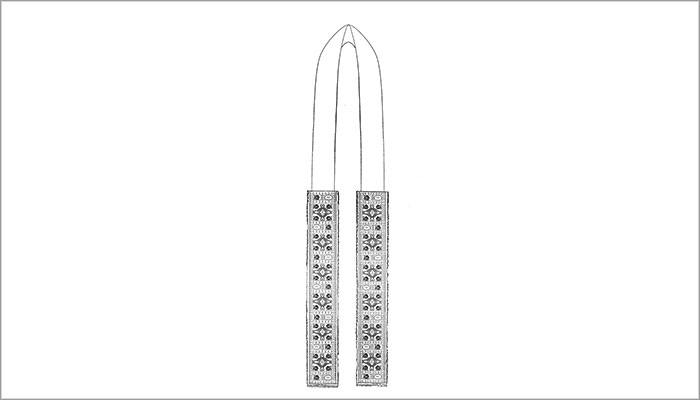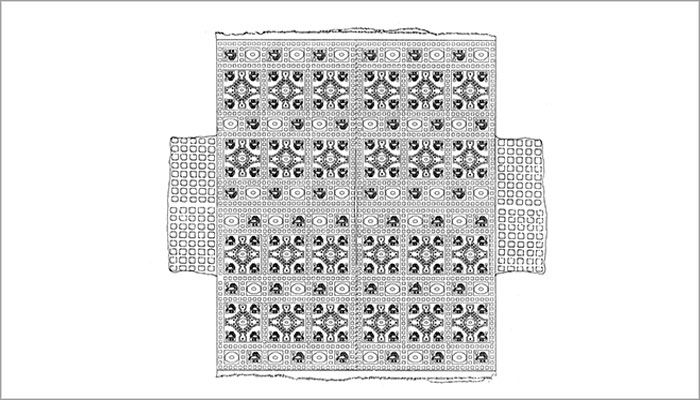Chimu, Labyrinths of a sacred costume
The costume and its symbols
Clothing, in addition to fulfilling utilitarian functions such as protecting the wearer from the cold or the sun, was often a privileged media on which to represent concepts and ideas. This was especially true in the case of ceremonial costumes, which were replete with symbols related to the personages that wore them and the moment in which they were used. This type of costume had the property of symbolically investing the wearer with the political, social and ideological power of the symbols represented in its design.
This costume is an excellent example of the symbolic function of ceremonial clothing, as it is filled with symbols allusive to the diverse aspects of Chimú ideology. These symbols are arranged to represent a metaphor through which agricultural fertility may emanate from the ceremonial structures where the mummies of the rulers’ ancestors are worshipped. They speak of an ideological relationship between the productivity of the land and the cult of the ruling dynasty, a relationship that was materialized in rituals performed in the ceremonial centers controlled by the elite. Whoever wore a sacred costume incarnated the power to assure the social reproduction of a society based on agriculture, in spite of living in a territory covered in desert, paradoxically harassed by cyclical and destructive floods provoked by the global phenomenon of the El Niño marine current.







































